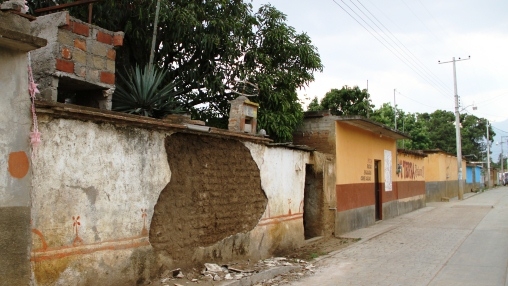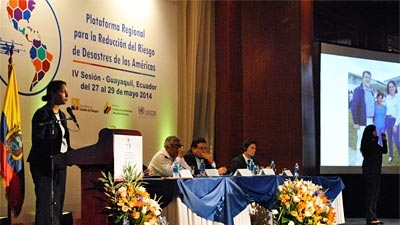January 8, 2009 changed Ana Cambronero’s life forever. That day, an earthquake measuring 6.2 on the Richter scale shook her town, Cinchona, in central Costa Rica, killing her husband and children.
Despite her suffering, Ana decided to look ahead and to work with her neighbors to rebuild their lives in safer locations under better conditions. Thanks to their joint efforts, an opportunity for recovery came out of the tragedy.
Today there is a new, much safer Cinchona. The experience of Ana and of Cinchona reflects both the losses that natural disasters can cause and the opportunities they provide in risk management.
With this objective in mind, delegates of several countries of the region met in Guayaquil at the fourth session of the Regional Platform (May 27-29) to demonstrate how a group of organizations can implement resilience projects to help reduce disaster risks in their countries.
The meeting resulted in the Guayaquil Declaration on Disaster Risks, a document that will contribute to the development of the new Global Framework for Disaster Risk Reduction, which will replace the current Hyogo Framework for Action (2005-2015). The new framework will be adopted at the third World Conference on Disaster Risk Reduction, to be held in Sendai, Japan on March 14-18, 2015.
Many natural phenomena, a single objective
Cony Silva, coordinator of the Partnership for Resilience in Nicaragua, said that the Regional Platform for Disaster Risk Reduction in the Americas is an opportunity to promote and highlight their work and to share experiences with other countries in an effort to engage in regional advocacy.
The disasters that Hurricane Mitch (1998) left behind in Nicaragua are still fresh in the minds of the country’s inhabitants. While Nicaragua was not directly hit like Honduras was, the powerful storm affected more than 2 million Nicaraguans. Recently, several tremors have alerted authorities to the possibility of an earthquake of major magnitude and impact.
“A key objective for the region is to reduce economic losses caused by disasters, which have intensified in recent years. An important aspect of this week will be to learn from the shared experiences in the application of the Hyogo Framework for Action,” said Margareta Wahlström, Special Representative of the United Nations Secretary-General for Disaster Risk Reduction (UNISDR).
During the Platform session, important advances in legislative frameworks, institutions and good practices were recognized. These included the definition of risk management as a government policy in Ecuador, the new laws for comprehensive risk management of Colombia, the Dominican Republic, Mexico and Peru, and several local and community efforts.


